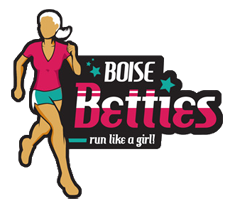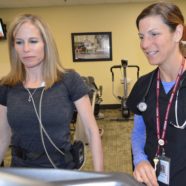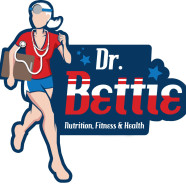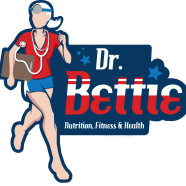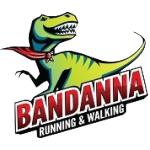Heart & Sole: Survivor’s Perspective on SCAD
Cynthia Mauzerall was planing to race the USATF Cross Country Championships with the Boise Betties’ masters team. Just a month before the race, she suffered a heart attack. It was an incredibly scary time for our team. Here Cynthia shares her perspective on the events immediately following the event. When I woke up, I saw faces staring at me-friendly, helpful, concerned, surprised. Family members were tearing up and I had no idea why. The only words I could think to say were, “hi” and “what am I doing here?” My husband was told he would be sharing the details with me over and over again until my memory got stronger. When I was informed that I had suffered a Spontaneous Coronary Artery Dissection (SCAD), I wasn’t sure how to wrap my arms around that. Frankly, I thought maybe they made a mistake. I asked myself, “Are they overreacting?” The look on the faces of the team of doctors suggested it was true. Amongst this team of white lab coats was one of my best friends since age 15. Certainly she will tell me what’s what. Dr. Jen (formally known as Dr. Jennifer Anderson) was calm and composed and yet seemed to empathize with how odd all this was to me. She likely knew I had to grasp that this was serious enough that I would not be heading out the door for a run any time soon. Once the doctors left the room, I searched for evidence. What are all these tubes, catheters, and scars? Family explained that a stent was placed over the dissected artery. I began to feel pain in my chest and ribs. They told me that was CPR that was conducted by 2 everyday heroes at the gym- a retired paramedic and a physical therapist. Slowly I ventured out of detective mode into one of Gratitude. I was grateful for Family and for amazing medical team that despite their current unassuming demeanor had to respond at lightning speed with limited information when I arrived at the ER. I was grateful for those who stepped up and did CPR knowing that it might not make a difference. The theme of gratitude has been on my mind continually- much because my story was filled with events that now seem rather miraculous. However, I am also grateful for mindfulness and science. Dr. Jen and her team keep abreast of advancements and case studies in Cardiology. In fact, Dr. Jen has been known to stash The New England Journal of Medicine in her bathroom for “easy reading”. A new gratefulness has emerged for curiosity and mindfulness. Dr. Jen has reiterated that we are experts on what are bodies are communicating to us. We need to listen, to be curious, to ask questions. I had ben slowing down substantially on my runs and workouts but felt foolish mentioning it to anyone. I felt lucky to be as active as I am at 42. I could have simply said, “Maybe this is nothing, but….” We don’t have to be MDs to be mindful of our bodies, and what they communicate to us. There are folks out there like Dr. Jen whose passion is to understand what the symptoms mean, we just have to vocalize those...
Read MoreHeart & Sole: The Betties to Run for Women’s Heart Health Awareness
The phone call came on what seemed to be an otherwise typical busy day in the hospital. “I’ve got a bit of an unusual case here, ” the emergency room physician began. “A 42 year-old woman was found down at the gym…” I had a fleeting thought of “jeez, I hope I don’t know her”, but refocused my attention on the rest of my colleague’s information. This certainly was an unusual case… He described her as a fit looking woman, who had no signs to suggest that she otherwise had a heart problem. However, we both had a high level of suspicion that she may have suffered a heart-related event. We made a quick plan over the phone, and I immediately headed to the emergency room to take a look at her. It was moments later that yes, indeed, our Jane Doe was someone that I knew. But not only was she someone that I knew… she was one of my closest friends. It is always difficult to see individuals arrive in such a critical state of illness. They have wires and tubes attached to their bodies. Though they are draped hastily in a hospital gown, there is no room for modesty, and some level of unintentional exposure is inevitable. There may be bruises or blood. They may be agitated and moving their limbs in awkward and uncoordinated ways. This was not the way my friend was supposed to look. Even though I knew she was not in a state to hear me, I promised her that we would sort this out. I swiftly placed a hollow tube into her artery and thread my way to the blood vessels supplying her heart. When the dye that illuminated her arteries clearly suggested the culprit, I must admit that I felt some level of shock: My friend had, indeed, experienced a heart attack. Recent studies suggest that we are becoming more aware of the fact that heart disease remains the number one killer of women in America. While one in 31 women dies from breast cancer each year, heart disease claims the lives of one in three. This is equivalent to roughly one death each minute. Unfortunately, studies also suggest that younger women are less aware of the importance of heart disease compared to older women. This is extremely important, as heart disease affects all ages, and raising awareness may save lives. Like my friend, heart disease can affect healthy, fit individuals who abide by good eating habits and have never smoked a cigarette. Yet there are other more subtle risk factors, such as knowing your family history and your blood cholesterol numbers, that are important to recognize. It is also important to understand that symptoms of heart disease may be atypical – and may be mistaken for anxiety, gut pain, or just general fatigue. We need to listen to our bodies. We need to listen to each other. We need to know our own risk factors, and we need to discuss these with our medical providers. It is with great relief, awe and gratitude that I can share my friend’s story and her happy ending. She is now home with her beautiful family, and her heart is beginning to heal. She has returned to work, and has started some light exercise with our cardiac rehabilitation program (which she described to me as “fun”). She continues to inspire us all, and has generously agreed to share her story with our community. This weekend, the USATF Cross Country National Championship running races will be held in Bend, Oregon, and our...
Read MoreDR. BETTIE: Resuming Training After an Illness
Welcome to Dr. Bettie’s Corner, your local expert in nutrition, fitness, and health! This is a bimonthly forum where we attempt to address Woman-focused topics of interest. We welcome your suggestions & questions! Please contact us with yours. Resuming Training After an Illness We are right in the middle of cold and flu season, which means you are bound to find yourself sidelined at some point due to illness. How do you best take care of yourself when illness strikes and safely resume your training once you start to feel like yourself again? Dr. Bettie is here to help! I recently found myself taken down by the flu. What I thought was just a little sniffle turned into a high fever and body aches and I found myself down for the count. Do not try to run with a high fever. Recovering from illness in and of itself places a lot of demands on your body. Your body and immune system is working overtime to fight the virus. Work on resting and staying hydrated. By resting now, you will allow your body the time it needs to heal and you will be able to get back to your training sooner. Your body heals more quickly with less stress. Also focus on eating high quality foods and getting plenty of sleep. Once your fever breaks, that means your body is on the mend, but it does not mean you should jump right back into your training plan, After your temperature and eating has returned to normal, give your body at least one or two additional days of rest before resuming training. And when you do run again start with easy effort runs. As a rule of thumb, do one easy effort run for each day that you were sick before resuming high intensity workouts. Listen to your body, Even though you may feel better, your immune system is still working on rebuilding itself. If you find yourself struggling with a minor cold, which includes only light sniffles and no fever, it is still okay to run. In fact, some studies have found that people with minor colds have actually felt better after exercising. So there’s no need to derail your training for a runny nose, but listen to your body and stop if you develop a fever or chest congestion. Finally, do not despair if you do find yourself having to take a few days off for an illness. You will not lose a lot of fitness by resting for a few days and your body needs the rest more than it needs the running when you are sick and fighting an illness. Take it easy and resume running gently so as not to overstress your body and risk the return of illness. The investment you make in resting your body will be worth it, as you will find yourself back on the roads and trails in less time. Here’s to good health and happy running!...
Read MoreDR. BETTIE: Run Naked and Tune In to Your Internal GPS
Welcome to Dr. Bettie’s Corner, your local expert in nutrition, fitness, and health! This is a bimonthly forum where we attempt to address Woman-focused topics of interest. We welcome your suggestions & questions! Please contact us with yours. Run Naked and Tune In to Your Internal GPS Earlier this fall I promised myself (and Coach G for accountability) that I would run the Turkey Day 5k “naked.” Don’t worry, no need to keep the kids inside (I left my streaking days behind in college) — I’m not talking about taking my clothes off, I’m talking about running sans GPS watch. Scary, right? How would I pace myself without technology? How would I do without knowing anything about my time? I’d heard some positive things about running without a GPS watch and was curious about trying it, but my type A personality is quite attached to glancing at my watch every so often while training and racing so I was not sure how I would do without it. As a frequent contributor to Runner’s World and similar running publications, coach Jenny Hadfield suggests that runners practice running without GPS devices so that we can tune into our own bodies and run at the pace our bodies are ready to run on any given day rather than becoming hyper focused on the number on the watch. While GPS watches are a valuable training tool, when overused they can prevent us from finding our internal GPS. Hadfield created three “effort-based” zones that we can try to visualize when running: Yellow Zone (Easy): You should be able to have a conversation and talk in full sentences. Orange Zone (Moderate): You should still be able to talk, but only in one or two word responses. Red Zone (Hard): You do not feel like talking when running in this zone. You need all of the oxygen you can get and do not want to use any of it for speaking. This is the anaerobic zone. Coach Hadfield recommends that when racing a 5k experienced runners warm up in the yellow zone and split the race evenly between the orange and red zone. So with that in mind, I put painters tape over my Bia GPS sports watch and prepared to give running naked a try. I pressed start on my watch, peeked under the tape to make sure it was running, put the tape down again and crossed over the start mat. I tried to find someone who seemed like he or she was running about my pace to pace myself off of, but that proved to be a difficult strategy. This might work in a longer race like a half or full marathon, but in a crowded turkey day 5k, it was just not possible. I was surrounded by all types of runners. Fast runners, slow runners, families running together, a runner in jeans, and runners in costume. I tried to just run in a straight line as best I could and find some sort of groove without doing too much weaving in and out of other people. The urge to peek underneath the tape was strongest during the first half mile or so. I kept looking down at my watch only to see blue painters tape with the message “Run Happy!” written on top. But how far had I gone? What was my average pace? My inquiring mind wanted to know! After glancing down at my wrist at least 27 times in the first 3 minutes of the race, my brain finally got the message that it was not going to get any...
Read MoreDR. BETTIE: Winter Running- Is the Weather Outside TOO Frightful?
Welcome to Dr. Bettie’s Corner, your local expert in nutrition, fitness, and health! This is a bimonthly forum where we attempt to address Woman-focused topics of interest. We welcome your suggestions & questions! Please contact us with yours. Winter Running: Is the Weather Outside TOO Frightful? It’s hard to believe it’s that time of year. (I mean, seriously hard to believe.) And nobody hates cold weather more than Dr. Bettie. (Pretty sure.) What can we do to survive these harsh days? Here’s a short list of advice, which I hope will help. The gear. There is no shortage of advice on this, with posts already available on Coach G’s main blog. A bullet summary: Windstopping shell, upper and lower. I find the more cash I shell out for the quality, the less crap I have to layer up. Lots of name brands to choose from, but probably anything geared toward running, with “windstopper” on it, is decent. (I personally love North Face, but I had to promise that nobody needed to buy me anything for a couple of Christmases as a result. Nuff said.) Outer vest is also an option. Base layer. If the weather is 15 degrees or warmer, I find the windstopper suit with a light sweat-wicking shirt inside is enough (like those underarmour, polypro type deals). If it’s colder, an extra layer of tights and slightly thicker upper layer is helpful. Something with Merino wool is particularly effective; there are multiple thicknesses available. Extremities. Hat and gloves, duh. May consider doubling the gloves when it’s less than 15 degrees. I’ve also noted that fluffy hats (with no windstopping ability) kind of suck when the digits are single outside; ear muffs could help here, or better yet, one of those ski hoodies that also includes neck/face/head coverage. And lastly, don’t be a ding-dong and get all suited up only to put on your regular cotton socks and shoes (like I did last week – brr!)…. Throw on the smart wool socks, or the like. Otherwise, I do NOT feel that “snow running shoes” are necessary, and the usual running shoes will suffice. Extra comforts. Gators are kind of nice if you are trudging out on ungroomed trails. If it’s actively snowing outside, don’t forget the viser/hat with brim – snow in the eyeballs can be annoying and somewhat painful. Safety. Those yaktraks are a swell idea. I just bought some. And of course, try to run close to home or have a backup plan (cell phone etc.) if something goes poorly. General rule. Stepping outside and feeling cozy? Step back on inside, take off a layer, and try again. (You overdressed.) Indoor warmup. This is a great way to get your core warm, which may take longer than usual in the chilly outdoors – and may help you feel a little better just getting started. Nothing crazy here, just a few pushups, situps, maybe a few jumping jacks should do the trick. Consider changing your stride – just a little – in the snow. This is for obvious safety reasons, with questionable footing and potential room for slippage out on the wintry trails or roads. Shortening your stride will keep you more compact and stable, with less potential to tweak a knee or wipe out. And finally… When is it too cold to run outside? Everybody has their own personal threshold. From a health/safety standpoint, I have seen colleagues claim that even 20 degrees below zero is “okay”. (If you’re completely nuts, that is.) My own threshold is “double digits”, but sure, I’ve gotten out there in...
Read MoreDR. BETTIE: Staying Motivated During the Fall and Winter Months
Welcome to Dr. Bettie’s Corner, your local expert in nutrition, fitness, and health! This is a bimonthly forum where we attempt to address Woman-focused topics of interest. We welcome your suggestions & questions! Please contact us with yours. Staying Motivated During the Fall and Winter Months Q: Dear Dr. Bettie, I just finished my big fall race, now what? How do I stay motivated to train during the fall and winter months? A: First of all, congratulations! It’s a huge accomplishment to complete an event that you have trained for all summer. Hope it was a great experience for you! Make sure you take some time off after the race to let your muscles fully recover. I recommend that you take a full week off of running after racing a full or half marathon. Just like tapering before a big event, recovery after the big event is also important. While you are resting, remember to stretch, drink lots of water and eat plenty of dark leafy greens to aid your recovery. When you do resume running, start with easy runs and gradually resume speed runs, hill runs, and longer runs. Fall and winter is a great time to work on strength training and shorter, speedier type races. Here are a few upcoming local races that you might be interested in: November 15: Cross Country Meet in Eagle November 27: Boise Turkey Day 5k December 20: YMCA Christmas Run And to really power and motivate you through those dark, cold months of winter, you may want to pick a longer spring race to focus on. Race to Robie Creek or the Famous Idaho Potato Marathon, perhaps? When logging all of those winter miles, remember to run safely in the dark. I recently learned a trick of wearing not only a headlamp on my head but a light clipped to my waist as well. The second light makes a huge difference with depth perception on the trails! And don’t forget your reflective gear. Remember to stay off muddy trails, and as the roads and trails become snowy or icy, you can run with Yaktrax attached to the bottom of your shoes for more traction over the snow and ice. Speaking of snow and ice, winter is a great time to incorporate some different cross-training activities such as nordic skiing into your routine. Finally, running with others makes running in the dark and cold both safer and more fun, so if you are still on the sidelines, please come join us soon for a run and enjoy running through the fall, winter and well into next...
Read More